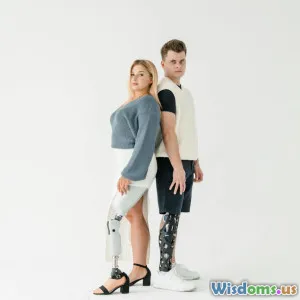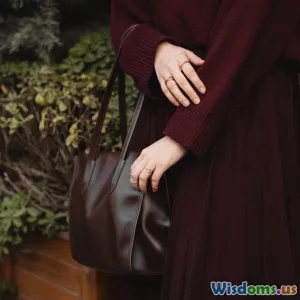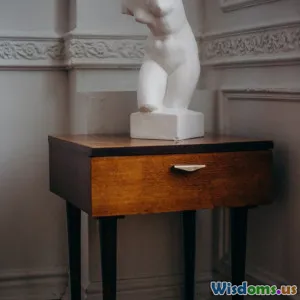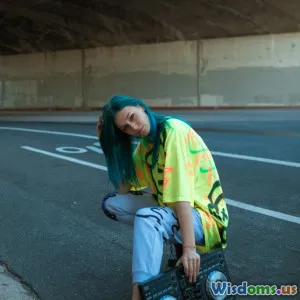
Breaking Barriers Adaptive Fashion for People With Disabilities
7 min read Explore how adaptive fashion is transforming inclusivity, empowering people with disabilities through innovative, stylish designs. (0 Reviews)
Breaking Barriers: Adaptive Fashion for People With Disabilities
Fashion has always been a vital form of self-expression, reflecting identity, culture, and individuality. Yet, for many people with disabilities, traditional fashion has often been inaccessible or uncomfortable. This fundamental barrier is now being challenged by the rise of adaptive fashion—a revolutionary approach that blends style with functionality and inclusivity.
In this article, we delve into the transformative world of adaptive fashion, exploring its innovations, societal impacts, and how it’s reshaping the perception and experience of fashion for people with disabilities.
What Is Adaptive Fashion?
Adaptive fashion refers to clothing designed specifically to meet the needs of people with disabilities, mobility challenges, or sensory sensitivities. It emphasizes ease of wear, comfort, accessibility, and style without compromising aesthetics.
Key features often include:
- Magnetic closures instead of buttons or zippers for easier fastening
- Flat seams to reduce skin irritation
- Adjustable hems and waistbands for comfort
- Fabrics that stretch or provide breathability
- Clothing adapted for use with wheelchairs, prosthetics, or medical devices
This concept breaks away from the traditional “one-size-fits-all” fashion model by acknowledging functional diversity.
The Roots and Growth of Adaptive Fashion
Historically, adaptive clothing was either custom-made or limited to medical garments lacking in style. However, as awareness increased about the diverse needs of people with disabilities, major brands and designers began incorporating adaptive lines.
Examples:
-
Tommy Hilfiger Adaptive: Launched in 2016, this line includes features like magnetic buttons and side-open pants made to fit wheelchairs comfortably. It significantly elevated visibility for adaptive wear.
-
Zappos Adaptive: An online pioneer offering shoes and apparel designed for varying abilities, providing detailed accessibility options.
-
Target’s Cat & Jack Adaptive Clothing: Integrating adaptive designs into mainstream retail, with sensory-friendly and tagless versions.
Statistically, the global adaptive clothing market was valued at over $210 million in 2021 and projected to grow significantly, driven by increasing demand for inclusivity and functional apparel.
Why Does Adaptive Fashion Matter?
Adaptive fashion isn’t just about clothing—it’s about dignity, independence, and representation.
Empowerment Through Choice
Designing for accessibility means people with disabilities can select stylish pieces like anyone else, preventing the feeling of being limited to “medical clothes.” This choice fosters self-esteem and personal expression.
Addressing Physical Barriers
For example, wheelchair users often struggle with hems that bunch up or waistbands that are uncomfortable when seated. Adaptive designs cater directly to these realities, prioritizing comfort.
Sensory Considerations
Certain disabilities, such as autism or tactile sensitivities, make traditional fabrics and labels unbearable. Adaptive clothing uses soft, seamless fabrics to minimize distress.
Social Inclusion and Visibility
Including models with disabilities in fashion campaigns challenges societal stereotypes and promotes diversity.
As Rebecca Atkinson, creative director at a leading adaptive brand, notes: “Adaptive fashion breaks down assumptions about ability and beauty—everyone deserves clothing that makes them feel confident and comfortable.”
Challenges Remain in the Industry
While progress is clear, the adaptive fashion sector still faces hurdles:
- Limited Availability: Adaptive lines are expanding but remain a niche in many markets.
- Pricing: Specialized designs can be more costly due to smaller-scale production.
- Awareness: Both consumers and retailers sometimes lack knowledge about adaptive options.
- Design Inclusivity: More collaboration with people with disabilities is needed to create truly user-focused garments.
advocacy groups continue to push for broader adoption and greater innovation.
Inspiring Adaptive Fashion Innovations
Technology Integration
Smart textiles and wearable tech now enhance adaptive clothing functionality. For instance, garments with embedded sensors can monitor health indicators, and voice-activated zippers ease dressing challenges.
Customization Platforms
Companies like Unspun use 3D body scanning to create custom-fit jeans tailored for unique body shapes, including those with prosthetics.
Adaptive Athletic Wear
Sportswear brands are developing adaptive lines to allow athletes with disabilities to compete comfortably, inspiring inclusivity in mainstream athletics.
Collaboration With Disability Advocates
Co-design processes involving disabled individuals ensure authenticity. This collaboration enhances practicality alongside trend-forward aesthetics.
How Can You Support Adaptive Fashion?
- Shop Adaptive Brands: Support designers prioritizing accessibility.
- Educate and Advocate: Share information to raise awareness.
- Encourage Inclusivity in Your Community: Demand adaptive clothing in stores or workplaces.
- Promote Representation: Celebrate media featuring models and influencers with disabilities.
Brands, consumers, and policymakers all play a role in sustaining this important movement.
Conclusion: Fashion for Every BODY
Adaptive fashion is more than a trend—it’s a social shift. By “breaking barriers,” it restores power and choice to millions who were traditionally excluded. The merging of beauty, function, and inclusivity challenges industry norms and inspires wider acceptance.
The future of fashion lies in embracing diversity in its fullest sense—where style truly knows no limits or exclusion. Adaptive fashion pioneers are lighting the path toward a more inclusive, expressive, and equitable world.
As the industry evolves, one thing is clear: fashion’s real purpose is to make everyone feel seen, valued, and powerful—no matter their abilities.
Rate the Post
User Reviews
Popular Posts




















